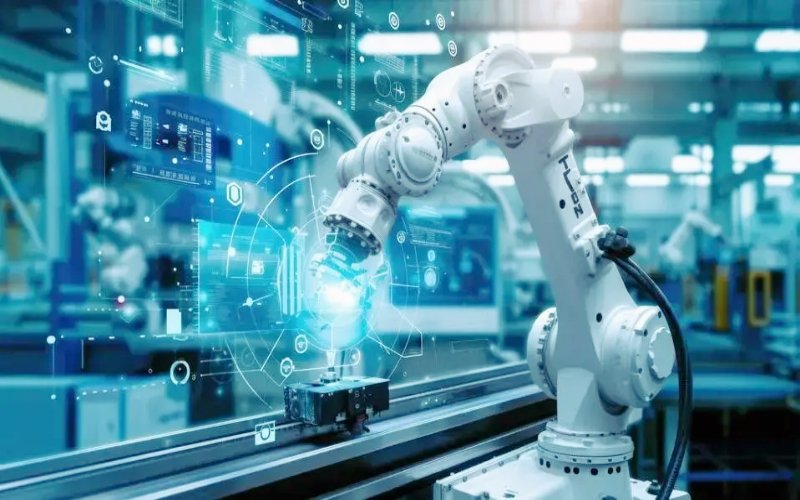In today’s world, where energy demands are soaring and sustainability is essential, AI-Driven Energy Management has emerged as a revolutionary approach. With the power to optimize energy usage, reduce operational costs, and support sustainable practices, AI-driven solutions offer immense benefits for both industries and consumers. This article explores how AI is reshaping energy management, its key benefits, applications across different sectors, and the challenges that come with its implementation.
Understanding AI-Driven Energy Management
What is AI-Driven Energy Management?
At its core, AI-Driven Energy Management leverages artificial intelligence (AI) technologies like machine learning, predictive analytics, and automation to streamline and optimize energy usage. AI systems gather and analyze data from various sources—such as smart meters, sensors, and IoT devices—to identify patterns and make real-time adjustments. This data-driven approach enables organizations to reduce energy waste, lower costs, and achieve their sustainability goals effectively.
The Growing Importance of Smarter Energy Solutions
With climate change, rising energy costs, and an ever-growing demand for resources, the need for more efficient and sustainable energy management solutions has never been more pressing. Traditional energy management methods often involve manual processes and reactive responses, which can be time-consuming and less effective. AI-Driven Energy Management offers a proactive, automated, and highly efficient alternative, allowing organizations to optimize their energy use continuously and predictively.
Key Benefits of AI-Driven Energy Management
Enhanced Efficiency
One of the primary advantages of AI-Driven Energy Management is its ability to enhance efficiency. AI can process large volumes of data, identifying patterns and inefficiencies that might be missed through manual monitoring. By analyzing usage patterns and environmental factors, AI systems help adjust energy use in real-time, ensuring that resources are used optimally.
Significant Cost Savings
For businesses and residential users alike, AI-driven energy management can lead to substantial cost savings. When energy usage is optimized, operational costs decrease, reducing utility bills and allowing companies to allocate their resources more effectively. This makes AI-Driven Energy Management a valuable investment for industries looking to control expenses while achieving sustainability.
Supporting Sustainability Goals
With the global push for sustainability, AI-Driven Energy Management provides an effective way to reduce waste and support environmentally friendly practices. AI’s precise data analysis can help companies reduce their carbon footprint by optimizing the use of renewables, improving overall resource efficiency, and minimizing unnecessary energy consumption.
How AI Works in Energy Management
Data Collection and Analysis
Data is the foundation of AI-Driven Energy Management. AI systems collect data from smart devices, IoT sensors, and utility meters, providing a comprehensive view of energy usage. This data is then processed by AI algorithms to understand trends, peak usage times, and areas of inefficiency.
Predictive Analytics and Real-Time Adjustments
Once the data is analyzed, AI uses predictive analytics to forecast energy demand. For example, AI systems can anticipate when energy consumption will spike, allowing organizations to adjust their usage accordingly. By making real-time adjustments based on these predictions, AI-driven systems can reduce energy waste, balance load demands, and ensure resources are used efficiently.
Automated Control Systems
The final step in AI-Driven Energy Management involves automation. Using the insights derived from data analysis and predictive algorithms, AI systems can automatically adjust HVAC systems, lighting, machinery, and other energy-consuming assets. This automated control minimizes manual intervention, making energy management both seamless and effective.
Applications of AI-Driven Energy Management Across Industries
AI in Manufacturing
In the manufacturing sector, where energy-intensive machinery runs continuously, AI-Driven Energy Management can make a significant difference. AI systems monitor equipment to detect inefficiencies, predict maintenance needs, and minimize downtime. By optimizing energy use, manufacturers can reduce both costs and environmental impact.
AI in Retail and Commercial Buildings
Retail stores and commercial buildings are increasingly adopting AI-Driven Energy Management to control lighting, HVAC systems, and refrigeration units. By automating energy adjustments based on occupancy and external conditions, AI helps retail facilities reduce energy costs while maintaining a comfortable environment for customers.
Residential Applications
For residential users, AI-powered energy management systems, such as smart thermostats, optimize energy use in homes. These systems learn from users’ daily routines, adjusting heating, cooling, and lighting automatically to improve energy efficiency and reduce costs.
AI-Driven Renewable Energy Management
Managing Solar and Wind Energy
One of the most exciting applications of AI-Driven Energy Management is in the field of renewable energy. AI can analyze weather data, usage trends, and production levels for renewable sources like solar and wind energy. By accurately forecasting production levels, AI helps utilities balance supply and demand, ensuring consistent energy availability even with fluctuating renewable output.
Optimizing Energy Storage
Energy storage is critical in renewable energy management, and AI plays a key role here. AI-Driven Energy Management systems can determine the best times to store or release energy based on real-time demand forecasts. This ensures a stable energy supply, reduces reliance on non-renewable sources, and supports grid stability.
Challenges of Implementing AI-Driven Energy Management
Data Privacy Concerns
One challenge of AI-Driven Energy Management is data privacy. AI systems collect extensive data, including user behaviors and consumption patterns, which can raise concerns about data security and privacy. Ensuring that data is protected and compliant with privacy regulations is essential for companies adopting AI in energy management.
Infrastructure and Technical Requirements
Implementing AI-Driven Energy Management requires advanced technical infrastructure, including high-quality sensors, IoT devices, and robust software. Smaller companies or those with outdated systems may need significant upgrades to benefit from AI-driven solutions fully.
Costs of Implementation
While AI-driven energy management offers long-term savings, the initial costs can be high. Installing sensors, upgrading systems, and hiring skilled personnel to manage these technologies can be costly, particularly for small businesses. However, as AI technology becomes more accessible, these barriers are likely to decrease over time.
The Future of AI-Driven Energy Management
The future of AI-Driven Energy Management looks promising, with innovations and advancements continually expanding its capabilities. With the rise of smart grids, 5G connectivity, and more affordable IoT devices, AI’s potential in energy management is set to grow. We can expect increasingly accurate demand predictions, faster data processing, and solutions that make sustainable energy management available to more people and industries.
Conclusion
In conclusion, AI-Driven Energy Management is revolutionizing how we approach energy efficiency and sustainability. By leveraging AI’s ability to analyze data, predict demand, and automate control systems, industries can optimize energy use, reduce costs, and contribute to environmental sustainability. While challenges exist, particularly around data privacy and initial costs, the benefits far outweigh the drawbacks. As technology advances, AI-Driven Energy Management will become an essential tool in creating a sustainable, energy-efficient future for businesses and communities alike.
Also visit on techitl.com.




